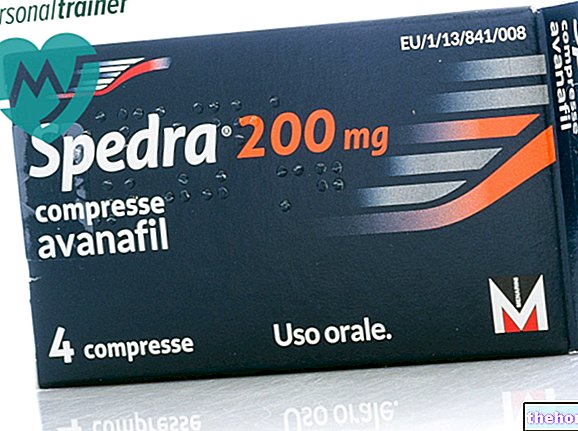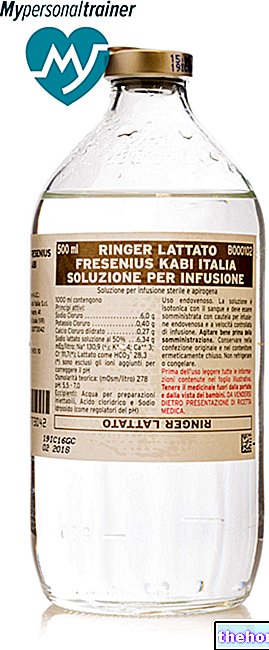Active ingredients: Mupirocin
NASAL BACTROBAN 2% ointment
Why is nasal Bactroban used? What is it for?
PHARMACOTHERAPEUTIC CATEGORY
Decongestants and other nasal preparations for topical use.
THERAPEUTIC INDICATIONS
BACTROBAN NASALE is indicated for the eradication of nasally located Staphylococcus aureus, including methicillin resistant Staphylococcus aureus strains.
Contraindications When nasal Bactroban should not be used
Hypersensitivity to the active substance or to any of the excipients.
Precautions for use What you need to know before taking Bactroban nasal
In the event of a possible serious local sensitization or irritation reaction occurring with the use of nasal mupirocin, treatment should be discontinued, the product removed, and appropriate alternative therapy for the infection instituted.
As with other antibiotics, prolonged use can lead to the emergence of resistant bacterial strains.
Pseudomembranous colitis has been reported with the use of antibiotics and can range in severity from mild to life-threatening conditions. Therefore, it is important to consider its diagnosis in patients who present with diarrhea during or after antibiotic use. Although this is less likely to occur with topical mupirocin, if the diarrhea is prolonged or significant, or if the patient experiences abdominal cramps, the treatment should be stopped immediately and the patient should be subjected to further checks.
Avoid contact with eyes. If accidental contact occurs, it is advisable to wash the eyes with plenty of water, until any residues of nasal ointment are eliminated.
Interactions Which drugs or foods can modify the effect of nasal Bactroban
Tell your doctor or pharmacist if you have recently taken any other medicines, even those without a prescription.
No interactions were observed between NASAL BACTROBAN and other drugs.
Warnings It is important to know that:
Pregnancy, breastfeeding and fertility
Ask your doctor or pharmacist for advice before taking any medicine.
Pregnancy
No adequate clinical data are available on use during pregnancy. Animal studies do not indicate effects on reproductive toxicity.
As there is no clinical experience with use in pregnancy, mupirocin should be used during this period only in cases where the potential benefits outweigh the possible risks of treatment.
Feeding time
No human and animal data are available during lactation
Fertility
There are no data on the effects of mupirocin on human fertility. Studies in rats showed no effects on fertility
Effects on ability to drive and use machines
BACTROBAN NASALE does not affect the ability to drive or use machines.
Dose, Method and Time of Administration How to use nasal Bactroban: Posology
Dosage
Adults, children, the elderly, patients with impaired liver function and patients with impaired renal function:
Apply a small amount of NASAL BACTROBAN, (about 30 mg of nasal ointment), in each nostril, 2 times a day, for 5 days.
Method of administration
Apply a small amount of nasal ointment (approximately the size of a match head) on the little finger or on the cotton ball and apply it to the inside of each nostril, on the front; then close the nostrils by pressing on both sides of the nose and massage gently with the thumb and forefinger, in order to evenly distribute the nasal ointment inside the nostrils.
Use a cotton ball for application to children or severely disabled patients.
Nasal staphylococci are usually eliminated within 3-5 days of treatment. However, the treatment must not exceed 10 days.
Do not mix with other preparations as there is a risk of dilution resulting in a reduction in the antibacterial activity and a potential loss of stability of mupirocin in the ointment.
Overdose What to do if you have taken too much nasal Bactroban
In case of accidental ingestion / intake of an excessive dose of NASAL BACTROBAN, notify your doctor immediately or contact the nearest hospital.
If you have any questions about the use of NASAL BACTROBAN, ask your doctor or pharmacist.
The toxicity of mupirocin is very low. In case of accidental ingestion of the nasal ointment, administer symptomatic treatment.
Side Effects What are the side effects of nasal Bactroban
Like all medicines, BACTROBAN NASAL can cause side effects, although not everybody gets them.
Adverse reactions are listed below by organ, organ / system and by frequency. Frequencies are defined as: very common (≥1 / 10), common (≥1 / 100,
Disorders of the immune system
Very rare: skin hypersensitivity reactions, systemic allergic reactions such as generalized rash, urticaria, angioedema
Respiratory, thoracic and mediastinal disorders
Uncommon: nasal mucosal reactions
Compliance with the instructions contained in the package leaflet reduces the risk of undesirable effects.
Reporting of side effects
If you get any side effects, talk to your doctor or pharmacist. This includes any possible side effects not listed in this leaflet.Undesirable effects can also be reported directly through the national reporting system at "https://www.aifa.gov.it/content/segnalazioni-reazioni-avverse". By reporting side effects you can help provide more information on the safety of this medicine.
Expiry and Retention
Expiry: see the expiry date printed on the package.
The expiry date refers to the product in intact packaging, correctly stored.
Warning: do not use the medicine after the expiry date shown on the package.
Conservation rules
Do not store above 25 ° C.
Any product not used at the end of the treatment must be discarded.
Medicines should not be disposed of via wastewater or household waste. Ask your pharmacist how to dispose of medicines you no longer use. This will help protect the environment.
Keep this medicine out of the sight and reach of children.
Composition and pharmaceutical form
COMPOSITION
NASAL BACTROBAN 2% ointment
100 g of ointment contain
Active principle:
mupirocin calcium salt 2.15 g corresponding to mupirocin 2.00 g.
Excipients: petroleum jelly; glycerin esters.
PHARMACEUTICAL FORM AND CONTENT
Ointment for nasal use. 3 g tube.
Source Package Leaflet: AIFA (Italian Medicines Agency). Content published in January 2016. The information present may not be up-to-date.
To have access to the most up-to-date version, it is advisable to access the AIFA (Italian Medicines Agency) website. Disclaimer and useful information.
01.0 NAME OF THE MEDICINAL PRODUCT
NASAL BACTROBAN 2% OIL
02.0 QUALITATIVE AND QUANTITATIVE COMPOSITION
100 g of ointment contain
Active principle:
mupirocin calcium salt 2.15 g
corresponding to
mupirocin 2.0 g
Excipients with known effects
For the full list of excipients, see section 6.1.
03.0 PHARMACEUTICAL FORM
Nasal ointment.
04.0 CLINICAL INFORMATION
04.1 Therapeutic indications
BACTROBAN NASALE is indicated for the eradication of nasally located Staphylococcus aureus, including methicillin resistant Staphylococcus aureus strains.
04.2 Posology and method of administration
Dosage
Adults, children, the elderly, patients with hepatic insufficiency and patients with renal insufficiency
Apply a small amount of NASAL BACTROBAN, (about 30 mg of nasal ointment), in each nostril, 2 times a day, for 5 days. Nasal staphylococci are usually eliminated within 3-5 days of treatment.
Method of administration
Apply a small amount of nasal ointment (approximately the size of a match head) on the little finger or on the cotton ball and apply it to the inside of each nostril, on the front; then close the nostrils by pressing on both sides of the nose and massage gently with the thumb and forefinger, in order to evenly distribute the nasal ointment inside the nostrils.
Use a cotton ball for application to children or severely disabled patients.
However, the treatment must not exceed 10 days.
04.3 Contraindications
Hypersensitivity to the active substance or to any of the excipients listed in section 6.1.
04.4 Special warnings and appropriate precautions for use
In the event of a possible serious local sensitization or irritation reaction occurring with the use of nasal mupirocin, treatment should be discontinued, the product removed, and appropriate alternative therapy for the infection instituted.
As with other antibiotics, prolonged use can lead to the emergence of resistant bacterial strains.
Pseudomembranous colitis has been reported with the use of antibiotics and can range in severity from mild to life-threatening conditions. Therefore, it is important to consider its diagnosis in patients who present with diarrhea during or after antibiotic use. Although this is less likely to occur with topical mupirocin, if the diarrhea is prolonged or significant, or if the patient experiences abdominal cramps, the treatment should be stopped immediately and the patient should be subjected to further checks.
Avoid contact with eyes. If accidental contact occurs, it is advisable to wash the eyes with plenty of water, until any residues of nasal ointment are eliminated.
04.5 Interactions with other medicinal products and other forms of interaction
No interactions were observed between NASAL BACTROBAN and other drugs.
04.6 Pregnancy and lactation
Pregnancy
There are no adequate clinical data on the use of NASAL BACTROBAN during pregnancy. Animal studies do not indicate reproductive toxicity effects (see section 5.3).
As there is no clinical experience with use in pregnancy, mupirocin should be used during this period only in cases where the potential benefits outweigh the possible risks of treatment.
Pregnancy
No human and animal data are available during lactation.
Fertility
There are no data on the effects of mupirocin on human fertility. Studies in rats showed no effects on fertility (see 5.3).
04.7 Effects on ability to drive and use machines
BACTROBAN NASALE does not affect the ability to drive or use machines.
04.8 Undesirable effects
Adverse reactions are listed below by organ, organ / system and by frequency. Frequencies are defined as: very common (≥ 1/10), common (≥1 / 100,
Uncommon adverse reactions were identified from pooled tolerability data from the population of 422 patients treated across 12 clinical trials. Very rare adverse reactions have been identified primarily from data obtained in post-marketing experience and therefore are based on reporting frequency rather than actual frequency.
Disorders of the immune system
Very rare: skin hypersensitivity reactions, systemic allergic reactions such as generalized rash, urticaria, angioedema
Respiratory, thoracic and mediastinal disorders
Uncommon: reactions of the nasal mucosa
Reporting of suspected adverse reactions.
Reporting of suspected adverse reactions occurring after authorization of the medicinal product is important as it allows continuous monitoring of the benefit / risk balance of the medicinal product. Healthcare professionals are asked to report any suspected adverse reactions via the national reporting system. "address https://www.aifa.gov.it/content/segnalazioni-reazioni-avverse.
04.9 Overdose
The toxicity of mupirocin is very low. In case of accidental ingestion of the nasal ointment, administer symptomatic treatment.
05.0 PHARMACOLOGICAL PROPERTIES
05.1 Pharmacodynamic properties
Pharmacotherapeutic group: Decongestants and other nasal preparations for topical use -
ATC code R01AX06.
Mupirocin is an antibiotic for topical use, of natural origin, produced by fermentation of Pseudomonas Fluorescens.
Mupirocin inhibits the synthesis of bacterial isoleucyl-tRNA synthetase, therefore it stops bacterial protein synthesis.
Mupirocin is bacteriostatic at minimal inhibitory concentrations and is bactericidal at high concentrations obtained by topical application.
Following intravenous and oral administration, mupirocin is rapidly metabolised to inactive monic acid.
Activities
Mupirocin is a topical antibacterial agent that features in vivo activity against Staphylococcus aureus (including methicillin-resistant strains).
The spectrum of activity in vitro includes the following bacteria:
- Gram positive aerobes:
- Staphylococci spp.
- Streptococci spp
Gram negative aerobes:
It is also active against some Gram negative organisms sometimes associated with skin infections (although they do not colonize the nasal passages):
- Escherichia coli
- Haemophylus influenzae
- Neisseria gonorrheae
- Pasteurella multocida
Breakpoints
The breakpoints of mupirocin are: S 8 mcg / ml.
Cross resistance
Due to its mechanism of action and its chemical structure, mupirocin does not show any cross-resistance with other clinically available antibiotics.
Resistance mechanism
It has been shown that a low level of resistance in the Staphylococci (MIC 8-256, mcg / ml) is due to modifications in the bacterial enzyme isoleucyl-tRNA synthetase. It has been shown that a high level of resistance in Staphylococci (MIC> 512 mcg / mL) is due to a distinct bacterial isoleucyl-tRNA synthetase encoded by a plasmid. Inherent resistance in Gram negative organisms such as Enterobacteriaceae it could be due to poor penetration into the bacterial cell.
Microbiological susceptibility
The prevalence of acquired resistance may vary geographically and with time for selected species therefore, particularly for the treatment of severe infections, local information on resistance is desirable. As necessary, seek expert advice when the local prevalence of resistance is such that the utility of the agent in at least some types of infections is questionable.
* Activity has been demonstrated in clinical studies
05.2 Pharmacokinetic properties
Absorption
Mupirocin is absorbed in neonates and preterm infants following intranasal administration of mupirocin calcium salt ointment.
No intolerance problems were observed.
Absorption of nasal mupirocin through healthy or torn mucosa is negligible (less than 1% of the applied dose is excreted as monic acid in the urine).
Biotransformation
Mupirocin is only suitable for topical use. Following systemic administration, or if absorbed (e.g. through torn / diseased skin), it is metabolised to the inactive metabolite monic acid and rapidly excreted.
Elimination
Mupirocin is rapidly eliminated from the body through transformation into its inactive metabolite monic acid which is mainly excreted by the kidney (90%).
05.3 Preclinical safety data
Carcinogenesis
Carcinogenicity studies have not been conducted with mupirocin
Genotoxicity
Mupirocin was not mutagenic for Salmonella typhimurium (Ames test) or for Escherichia coli. In the reverse mutation test with Salmonella typhimurium TA98, a slight increase in the number of mutations was observed at cytotoxic concentrations up to 16 mcg / mL, in the absence of metabolic activation. In a test in vitro on mouse lymphoma (MLA) cells, no increase in the frequency of mutations was observed in the absence of metabolic activation. In the presence of metabolic activation, significant small increases in the frequency of mutations were observed at cytotoxic concentrations. However, no effects were observed on gene conversion / mutation tests in yeast cells, on one test in vitro with human lymphocytes or in a test in vitro with unscheduled DNA synthesis. Also, a test in vivo on mouse micronucleus (chromosomal damage) and in a rat Comet test (DNA strand break) were negative.
Reproductive toxicity
Fertility
Mupirocin administered in doses up to 100 mg / kg / day subcutaneously to male rats from 10 weeks before mating until pups are born and female rats from 15 days before mating to 20 days after mating. in females analyzed on day 21 or up to 24 days after delivery in those in which the birth of the litter was allowed, it had no effect on fertility.
Pregnancy
In studies conducted in rats using subcutaneous doses up to 375 mg / kg / day, administered from day 6 to day 15 of gestation, there was no evidence of toxicity on embryo-fetal development.
Maternal toxicity (impaired weight gain and severe injection site irritation) associated with abortion or poor performance in offspring, however, there was no evidence of developmental toxicity in fetuses of rabbits leading to full term.
A study conducted on rats administered doses of mupirocin up to 107 mg / kg / day, a reduced survival of the offspring in some cases was observed at the highest doses, but in the presence of normality of the other development parameters.
06.0 PHARMACEUTICAL INFORMATION
06.1 Excipients
Vaseline, glycerin esters.
06.2 Incompatibility
Not relevant.
06.3 Period of validity
3 years.
06.4 Special precautions for storage
Do not store above 25 ° C.
Any product not used at the end of the treatment must be discarded.
06.5 Nature of the immediate packaging and contents of the package
3 g aluminum tube, lacquered inside, with polypropylene spout and cap.
The tube is packed individually.
06.6 Instructions for use and handling
Do not mix with other preparations as there is a risk of dilution resulting in a reduction in the antibacterial activity and a potential loss of stability of mupirocin in the ointment.
07.0 MARKETING AUTHORIZATION HOLDER
GlaxoSmithKline S.p.A. - Via A. Fleming, 2 - Verona
08.0 MARKETING AUTHORIZATION NUMBER
Nasal ointment tube at 2% A.I.C .: 028980011
09.0 DATE OF FIRST AUTHORIZATION OR RENEWAL OF THE AUTHORIZATION
27 November 1995 / November 2008
10.0 DATE OF REVISION OF THE TEXT
AIFA Determination of 3 October 2014




























